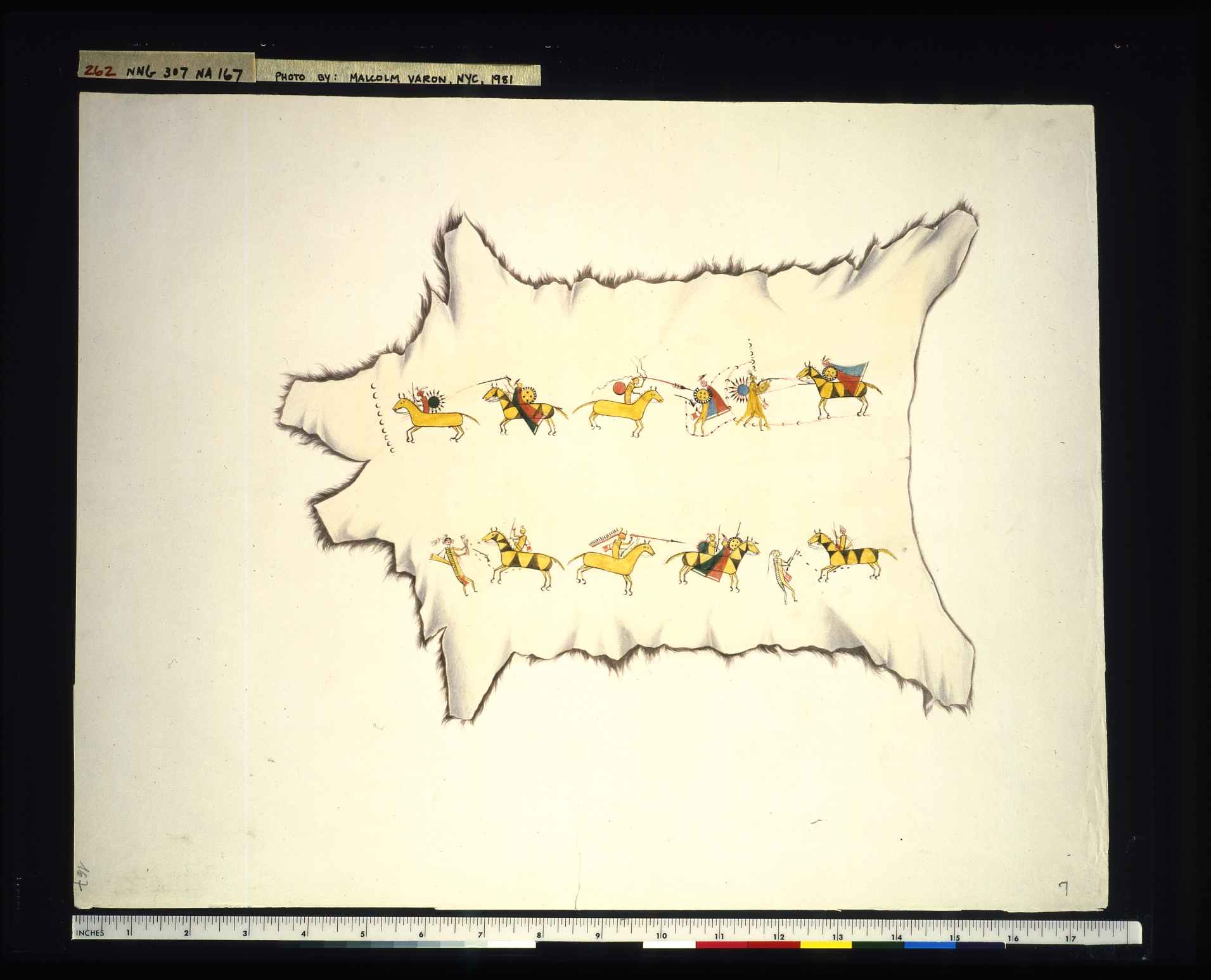Hidatsa Buffalo Robe

Description
As evident in Bodmer's figure sketches and portraits, the buffalo robe was one of the most common articles of clothing on the Plains. It was worn year round as a wrapper, hair side in for warmth, hair side out in milder weather. The plain robes were for everyday use, but others were decorated with strips of quill or beadwork and painted with bright patterns and figures. Native pigments were derived from a variety of sources, principally inorganic, such as clays, minerals, and charcoal. Other pigments were obtained from traders. According to most reports, geometric designs were painted by women, while pictographic life forms were the artistic province of men, who recorded their war exploits on their robes. This watercolor by Bodmer depicts such a robe, formerly in the collection of the Museum fur Volkerkunde, Berlin, and attributed to Pehriska-Ruhpa, the Hidatsa warrior whose portraits appear in Plates 329 and 330. Several battle episodes are portrayed on this robe, with the protagonist identified by recurring details such as a long, bicolor trailer. The trailer is markedly similar to one worn by Pehriska-Ruhpa in Maximilian's diary portrait and description of this man. The scene at the upper right is complex, the tracks and figures indicating that the hero dispatched one enemy on horseback and another while dismounted.
Original German Title
None
Medium
watercolor on paper
Dimensions
14 x 17 5/8
Call No.
JAM.1986.49.307
Approximate Date of Creation
1834


